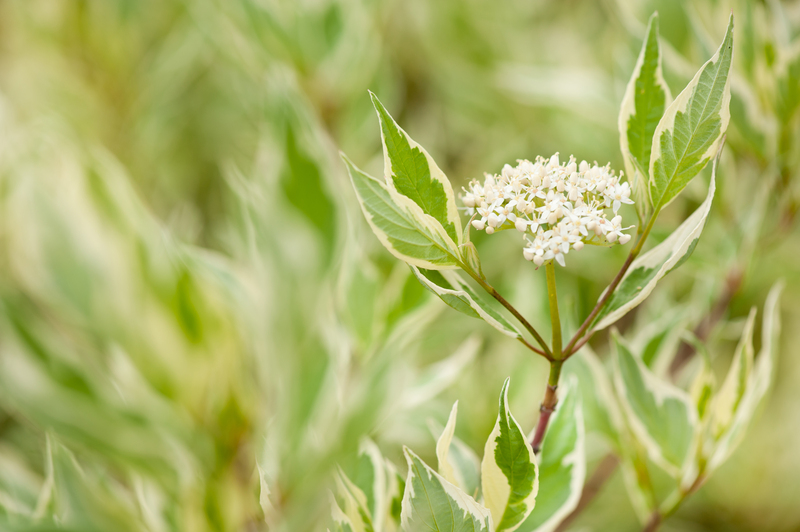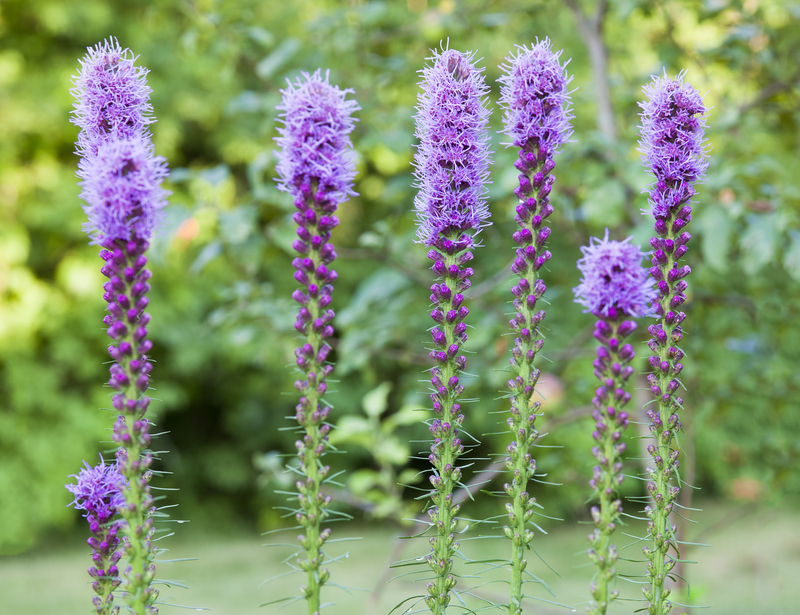Combine Hedges and Hardscapes for Effective Garden Privacy
In today's increasingly populated environments, maintaining a private outdoor space has become both a luxury and a necessity. Garden privacy isn't just about preventing peering eyes--it's about creating a tranquil refuge, a green sanctuary from the world. Among the numerous ways to achieve this, the synergy between hedges and hardscape elements for outdoor privacy stands out as both effective and aesthetically pleasing. This comprehensive guide explores how to combine hedges and hardscapes for effective garden privacy, ensuring your retreat is serene, secure, and visually stunning.
Understanding Garden Privacy Needs
Before delving into the strategies for private gardens, it's important to evaluate your specific privacy needs. Ask yourself:
- What areas need privacy? Patio areas, windows, play spaces, or entire garden boundaries?
- What privacy level do you want? Complete screening, partial filtering, or simple separation?
- What aesthetic style fits your home? Formal, informal, rustic, or contemporary?
- What is your budget and maintenance capability? Natural screens may require more care; hardscapes may be more costly upfront.

The Role of Hedges in Garden Privacy
Hedges are time-tested elements for garden screening solutions. Their lush foliage and year-round interest make them a favorite for many homeowners. The benefits of using hedges include:
- Natural screening: Living walls provide soft, green barriers that integrate seamlessly into the landscape.
- Wildlife habitat: Birds and pollinators thrive in hedged environments.
- Sound and wind breaks: Dense planting mitigates noise and buffers wind, enhancing comfort.
- Seasonal beauty: Many hedges offer flowers, berries, and autumn color.
Choosing the right hedge plant species is key. Options include:
- Evergreen hedges (e.g., yew, laurel, privet) provide year-round privacy.
- Deciduous hedges (e.g., beech, hornbeam) offer seasonal variation while maintaining structure.
- Flowering hedges (e.g., viburnum, forsythia) bring color and fragrance.
Hardscapes: The Backbone of Garden Structure
Hardscaping refers to the non-living features in a garden--fences, walls, pergolas, screens, and stonework. When blended thoughtfully with plantings, hardscape garden privacy structures:
- Deliver instant screening: Unlike hedges, hardscapes offer immediate coverage.
- Require minimal upkeep: Durable materials need minimal maintenance post-installation.
- Define garden zones: Hardscapes segment spaces, directing movement and creating intimacy.
- Offer design diversity: Choose from wood, metal, brick, stone, composites, and more.
Popular hardscape privacy elements include:
- Fencing: Traditional choice for boundary privacy. Can integrate with plantings or stand alone.
- Garden walls: Brick, stone, or concrete walls provide robust privacy and soundproofing.
- Trellises and pergolas: Support climbing plants, blending the living and built environment.
- Decorative screens: Laser-cut metal panels or wooden screens inject artistic flair.
- Gabion cages: Rock-filled baskets offer a contemporary, eco-friendly aesthetic and strong privacy.
Synergy: Why Combine Hedges and Hardscapes for Garden Privacy?
Combining hedges and hardscapes for private gardens multiplies the benefits of each, allowing for tailored privacy solutions that are beautiful, functional, and long-lasting. Here's why this combo works so well:
- Visual softness: Hedges soften the rigid lines of hardscapes, while hard materials provide structure to loose plantings.
- Layered privacy: Layering living screens with hard features blocks sightlines more effectively than either can alone.
- Year-round interest: Even when hedges lose leaves, hardscapes maintain privacy; evergreens and structures combine for continuous coverage.
- Flexible design: It's easy to adapt combinations to suit traditional or contemporary designs, formal or wild gardens.
- Longevity and resilience: Hardscapes endure for decades, and hedges can regenerate and mask wear on built features.
10 Creative Ways to Combine Hedges and Hardscapes for Effective Privacy
1. Layered Boundary Scenes
Double your screening by placing a solid fence or wall at the boundary, with a dense hedge directly in front. Choose yew, privet, or laurel for quick, lush coverage. The hedge camouflages the hardscape and creates a deep, vibrant green border.
2. Living Arches Over Pathways
Frame a garden entrance with a pergola or metal archway and allow climbing plants like ivy, roses, or wisteria to cover the structure. This combination forms a privacy screen while providing a stunning focal point.
3. Raised Planters and Box Hedges
Install stone or timber raised beds and fill them with slow-growing hedges such as box (Buxus sempervirens). This technique elevates foliage for modest yet private seating or dining areas, perfect for patios and terraces.
4. Pergolas with Green Curtains
Build a pergola or gazebo over a patio, then plant climbing evergreens or fast-growing vines around the sides. You'll enjoy a leafy privacy veil that's both cooling and secluded.
5. Gabion Walls Paired with Grasses
For a modern look, stack gabion baskets with decorative stone, then flank them with tall ornamental grasses or bamboo. The soft swaying plants contrast beautifully with the industrial aesthetic of gabions, combining function and design.
6. Partial Walls with Tall Shrubs
Build half-height garden walls using brick, natural stone, or rendered block, and plant tall flowering shrubs behind them. This setup shields seating areas while preserving views and light, ideal for compact city gardens.
7. Privacy Screens with Living Backdrops
Install decorative laser-cut metal or timber screens and set a hedge like photinia or holly behind them. The screen blocks direct sightlines; the hedge provides year-round interest, berries, and wildlife shelter.
8. Stepped Terraces and Hedges
In sloped gardens, use hardscaped retaining walls to form terraces, then plant hedges atop each level. This creates privacy in multiple zones as well as adding dimension and texture to the landscape.
9. Green Roofs and Vertical Planting
Combine privacy screens with green roofs or vertical garden panels. Climbing or hanging plants soften the hardscaping and provide dense, multi-layered privacy--ideal for balconies and rooftop gardens.
10. Courtyards with Living Walls
Enclose a private courtyard with solid walls and install modular living wall systems--vertical panels filled with compact hedging plants or succulents--that transform bare masonry into a breathing, organic barrier.
Best Plant Choices for Hedge and Hardscape Combinations
When choosing plants to combine with hardscapes for garden privacy solutions, consider the following characteristics:
- Evergreen vs. deciduous: Evergreens offer year-round cover; deciduous species provide seasonal variation.
- Growth rate: Fast growers fill gaps quickly; slow growers offer low maintenance.
- Leaf texture and color: Mix broadleaved, spiny, or variegated foliage for interest.
- Mature height and spread: Ensure the plant suits your space and won't outgrow its position.
- Climate and soil compatibility: Select species well-adapted to your region and soil.
Top plant picks for privacy hedging include:
- Yew (Taxus baccata): Dense, dark green, formal, and responds well to clipping.
- Privet (Ligustrum ovalifolium): Fast-growing, tough, suitable for most soils.
- Cherry laurel (Prunus laurocerasus): Large glossy leaves, excellent for screening tall fences.
- Hornbeam (Carpinus betulus): Holds onto brown leaves in winter, useful for loose formal hedges.
- Bamboo (Phyllostachys sp.): Rapid screening, modern look--use clump-forming types to avoid spread.
- Photinia 'Red Robin': Vibrant red new growth, provides year-round privacy and color.
- Box (Buxus sempervirens): Classic choice for low, formal borders and raised planters.
Design Principles: Creating a Balanced Privacy Solution
To ensure the most effective garden privacy screen, keep these important design principles in mind:
- Layering: Blend multiple heights and thicknesses--hedges in front of walls, climbers over screens, and groundcovers beneath shrubs.
- Contrast: Juxtapose the hard, clean lines of fences with the soft, irregular shapes of foliage for a pleasing, natural look.
- Repetition: Repeating both plant and hardscape materials creates rhythm and cohesion throughout your garden.
- Openings and sightlines: Use strategic gaps for views, breezes, or sunlight, balancing privacy with openness.
- Harmony of style: Match materials and plants to your home's architecture and overall garden vibe.
- Accessibility: Leave space for maintenance and consider future growth when spacing plants and structures.
Maintenance Tips for Lasting Garden Privacy
A well-designed hedge and hardscape privacy solution should stand the test of time. Here's how to keep your garden barriers looking their best:
- Pruning hedges: Regularly trim hedges to keep them dense, healthy, and the desired height and shape.
- Hardscape care: Clean surfaces, seal timber, oil metals, and check for structural integrity annually.
- Weeding: Prevent weeds from encroaching on borders or roots undermining hardscapes by mulching and manual removal.
- Plant health: Monitor for disease or pest issues and replace struggling plants promptly.
- Interplanting: Fill gaps with seasonal flowers, groundcover, or small shrubs to maintain privacy year-round.
Eco-Friendly Approaches to Privacy Landscaping
Combining hedges and hardscapes in an ecologically sensitive way can enhance your garden's sustainability. Some eco-friendly privacy tips include:
- Native plants: Choose local species for hedges that support native birds and insects.
- Permeable hardscapes: Use gravel, permeable paving, or openwork walls to allow rainwater to filter into the soil.
- Wildlife corridors: Incorporate gaps at ground level for hedgehogs, frogs, and other small animals to pass through.
- Biodiversity: Mix hedge species to provide varied habitats and food sources throughout the year.
- Recycled materials: Use reclaimed stone, timber, or metal in your hardscape design to lower environmental impact.

Frequently Asked Questions About Garden Privacy Solutions
Can I combine hedges and hardscape privacy screens on a small urban lot?
Absolutely! Vertical screens paired with slim columnar hedges or climbers work wonders in tight city gardens, providing privacy without taking up too much space.
What are low-maintenance options for privacy?
Opt for slow-growing evergreens like yew or buxus, and pair with composite fences or rendered block walls, which require little upkeep beyond occasional cleaning.
How can I make my privacy barriers attractive year-round?
Blend evergreen structure with seasonal color via understory bulbs, perennial flowers, or climbers with winter berries or colored stems. Decorative screens add interest even when plants are dormant.
Conclusion: Crafting Your Private Garden Oasis
Leveraging both nature and structure, the combination of hedges and hardscapes for garden privacy offers the ultimate in personalized, lasting, and attractive screening. Tailor your choice of materials and plants to your lifestyle, climate, and design sensibility. With thoughtful planning and creative combinations, you can transform your outdoor space into the ultimate private sanctuary--a lush, inviting zone that's shielded from the outside world yet open to relaxation and enjoyment.
Remember: Privacy is more than a barrier; it's an essential ingredient in creating a truly welcoming and peaceful outdoor living space. Combine hedges and hardscape with intention and imagination, and enjoy your garden retreat for years to come.